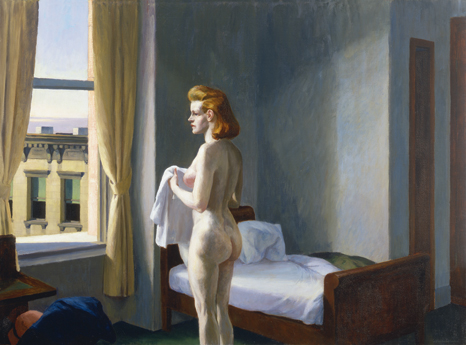Hopper

Interior Scenes

Scenes of daily life located in domestic interiors are a celebrated genre within the history of art, dating back to 17th-century Dutch painting. Due to their inherent nature they are linked to verbal expression, either because they describe typical characters or social situations or because they suggest a story that seems in some way familiar to us, or a combination of both.

Edward Hopper (Nyack, 1882 - New York, 1967). Morning in a City.
- Año
- 1944.
- Técnica
- Oil on canvas. 112.6 x 151.9 cm.
- Propiedad
- Williamstown (MA), Williams College Museum of Art, bequest of Lawrence H. Bloedel, class of 1923; inv. no. 77.9.7
In the 19th century this genre became extremely popular and was used by
artists such as Manet and the Impressionist painters. The settings of these
works were expanded to encompass public venues including theatres,
cafés and hotels, a change that reflected modern artists’ desires to reflect
the new habits and mindsets arising from the social transformations of the
period, particularly those relating to the rapid and chaotic growth of the new
industrial and financial capitals such as Paris, London and New York.
Among the 19th century painters it was Degas who best understood that
this modernisation of content required a parallel updating of pictorial resources.
In order to achieve this he experimented with the viewpoint and
composition, making use of the new medium for producing images – photography
– and profoundly rethinking other pictorial devices such as the
lighting, the construction of the space and the location of the viewer in
relation to the scene depicted.
A great admirer of Degas, Hopper made use of his discoveries, which
he developed and adapted to the cultural trends and visual languages of
the 20th century. He was particularly attracted to film, a medium that greatly
enhanced the narrative potential of images and one with which he established
a complex dialogue of mutual borrowings and influences over
the course of his life. It was perhaps at least partly due to the influence of
film that in the last years of his life Hopper’s painting gradually evolved
with the aim of placing an ever increasing emphasis on light.




